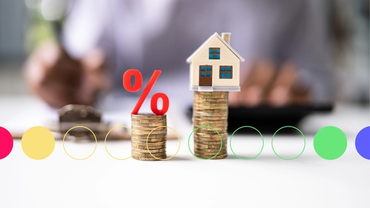Emergency Funds
The basics of emergency funds
In a nutshell
A pot of cash saved for unexpected emergencies
Recommended to cover around 3 months' wages
Ideally held in an easy-access account
What is an emergency fund?
An emergency fund is exactly what it says on the tin: It’s a fund, or an amount of money, that you set aside in the event that an emergency happens and you find yourself in need of cash at short notice.
Think of it like a financial safety net to use if you lose your job, your car breaks down, you’re injured and unable to work, you’re saddled with unexpected home repairs... you get the gist.
An emergency fund should be something that you only use for something urgent and necessary, and can be an important tool in tackling an unforeseen crisis and minimising your reliance on debt.
Is an emergency fund right for me?
It's always worth having a backup plan, no matter who you are, because you can never know when an unexpected expense will rear its ugly head. Whether it’s a change to your employment status, your health taking a hit, or your car breaking down and leaving you stranded, an emergency fund can help protect you from going into debt to sort it all out.
How to save up an emergency fund
The amount everyone needs to save for their emergency fund will differ depending on their circumstances, but generally speaking, it takes most people a year or two (at least) to put aside enough money to meet their emergency fund target.
Some might be able to put a sizable chunk of money into their fund in one go, but if that’s not for you then don’t fret. Putting aside small amounts on a regular basis may be more achievable, help you settle into a healthy habit of saving, and reduce the risk that you’ll need to dip back into your fund because you’ve committed too much in one go.
For example, if you know you need to save £4,500 for your emergency fund, review your spending to see if you can afford to set aside £200 a month towards your target. This would mean saving £200 into your emergency fund for 22.5 months to reach £4,500 – just shy of 2 years.
Top tip: If you decide to drip-feed cash into your emergency fund over a longer period, you can also incorporate this into your overall budgeting plan.
How much should you save into an emergency fund?
The amount of money you need to put in your emergency fund depends on how much you’re able to save and how much you think you’d need in an emergency, but as it’s difficult to pin down exact figures for hypothetical scenarios, there’s a good rule of thumb you can follow instead – you should have at least three months’ worth of essential outgoings in your emergency fund.
If you haven’t yet calculated how much you spend each month on basic provisions, such as rent and groceries, head over to our article ‘Budgeting basics: How to get off to a good start’ to learn how to review your spending and put together a budget that suits your unique needs. Take the money you spend each month on essentials and times this number by three to get the minimum value of your emergency fund. Of course, the more you can save, the better. But three months of living expenses is a good place to start.
For example, say your total monthly essential spending amounts to £1,500. You should aim to have at least three times this amount in your emergency fund, which is £4,500. If you’re in a position to set aside more, you might want to aim to have 6 months’ worth of outgoings, which would take you to £9,000.
It might take you a while to save up this much money, but it’ll be worth it if you find yourself impacted by one of life’s unexpected turns, such as by a long period of illness or if an injury prevents you from working.
What type of account is best for an emergency fund?
The easiest way to keep track of your emergency fund and make sure it stays separate from your day-to-day spending is to open a separate savings account especially for it. Not only will this stop you from being tempted to dip into it, but you might be able to earn some interest and give your savings a little boost too.
However, pay attention to the type of savings account you use. You want to make sure it’s in either a Cash ISA - where you can tuck away up to £20,000 per year tax-free – or an instant-access savings account – where you can access your money quickly if you need it in a hurry.
You’ll want to avoid using a Stocks & Shares ISA for an emergency fund, as investing your money over such a short time frame (less than 5 years) carries higher risk. Keep an eye out for fixed-term savings accounts too, as these will lock you in for a predetermined length of time and you won’t be able to access your cash before this – even if that dreaded emergency does eventually come along!
A sensible way of using a Cash ISA or instant-access savings account is by setting up a standing order from your main bank account on the day you get paid, so the money is automatically added to your emergency fund and you’re less likely to spend that cash on other things. And of course, you can manually add in more whenever you like.
Important things to remember when saving an emergency fund
Make sure you pay off outstanding debts first
Before you begin building your emergency fund, it’s worth stopping to consider if you’re in a good position to do so, or if you have other nagging debts that you’d be better off paying back first.
If you’ve got outstanding debt, you’re likely accruing interest on this and it makes sense to pay as much of that off as you can before you begin with your emergency fund. For example, if you have:
Credit card debt
Mortgage/rent arrears
Unauthorised overdraft
Pay-day loans
Then you may want to prioritise getting these under control. If your debt is minimal – e.g. you’re keeping up with mortgage payments, you’re paying all your credit card bills on time, etc – then you’re ready to start building your emergency fund.
Remember to use your emergency fund wisely
Once you’ve done the hard part and built up your emergency fund, there’s something else to think about: keeping it topped up. Though it might be tempting to dip into your fund to cover the cost of a treat to yourself or your family – like a holiday or an extravagant gift – try to only take money from it if you really need to. And when you do, make sure you’re able to replace the cash you’ve used as soon as possible, so you always have that safety net if the going gets tough.



